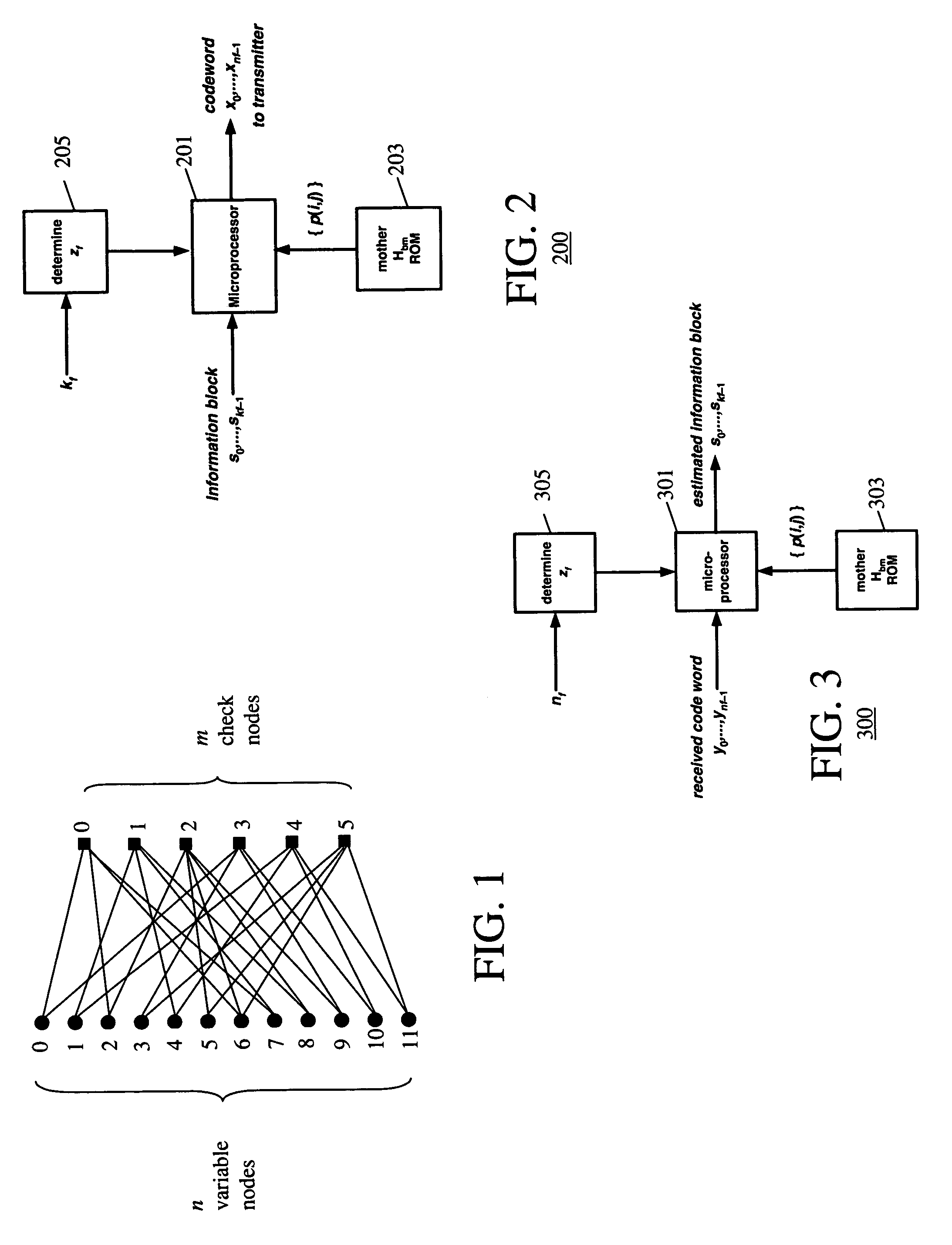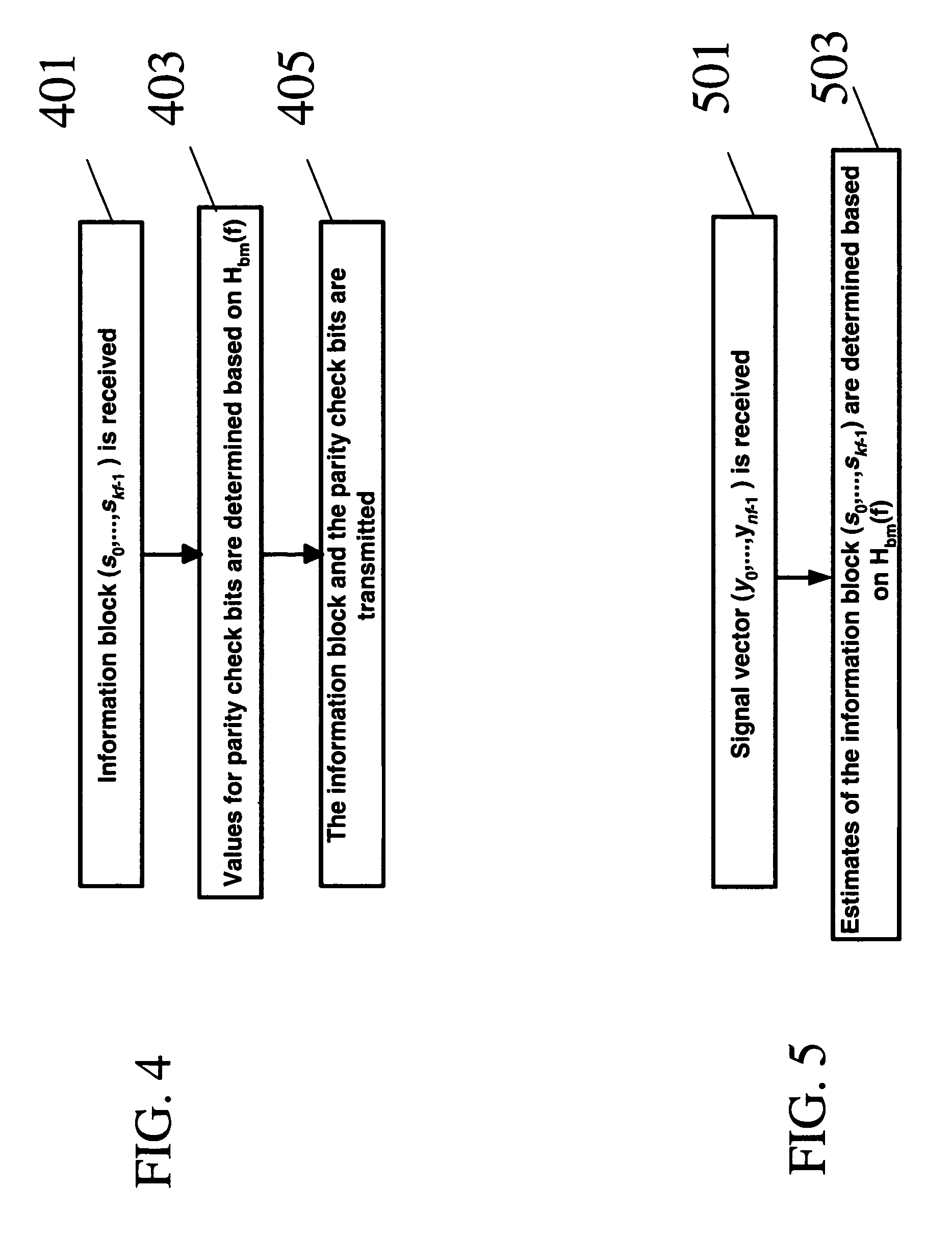Method and apparatus for encoding and decoding data
a technology applied in the field of encoding and decoding data, can solve the problems of low storage and processing complexity of structured design, difficulty in encoding and decoding random ldpc codes, and the inability to implement codes of different zsub>f/sub>. the effect of reducing the complexity of implementing codes
- Summary
- Abstract
- Description
- Claims
- Application Information
AI Technical Summary
Problems solved by technology
Method used
Image
Examples
Embodiment Construction
[0055]As an example, code design for 19 code sizes nf in the range of 576 to 2304 bits is described. Each base model matrix is designed for a shift size z0=96. A set of shift sizes {p(i, j)} is defined for the base model matrix and used for other code sizes of the same rate. For other code sizes, the shift sizes are derived from the base model matrix as follows:
[0056]For a code size corresponding to expansion factor zf, its shift sizes {p(f, i, j)} are derived from {p(i, j)} by scaling p(i, j) proportionally,
[0057]p(f,i,j)={p(i,j),p(i,j)≤0⌊p(i,j)zfz0⌋=⌊p(i,j)αf⌋,p(i,j)>0.
Note that αf=z0 / zf and └x┘ denotes the flooring function which gives the nearest integer towards −∞.
[0058]The base model matrices are tabulated below for three code rates of ½, ⅔ and ¾. Here f is the index of the code lengths for a given code rate, f=0, 1, 2, . . . 18.
Rate ½:
[0059]The base model matrix has size nb=24, mb=12 and an expansion factor z0=96 (i.e., n0=24*96=2304). To achieve other code sizes nf, t...
PUM
 Login to View More
Login to View More Abstract
Description
Claims
Application Information
 Login to View More
Login to View More - R&D
- Intellectual Property
- Life Sciences
- Materials
- Tech Scout
- Unparalleled Data Quality
- Higher Quality Content
- 60% Fewer Hallucinations
Browse by: Latest US Patents, China's latest patents, Technical Efficacy Thesaurus, Application Domain, Technology Topic, Popular Technical Reports.
© 2025 PatSnap. All rights reserved.Legal|Privacy policy|Modern Slavery Act Transparency Statement|Sitemap|About US| Contact US: help@patsnap.com



